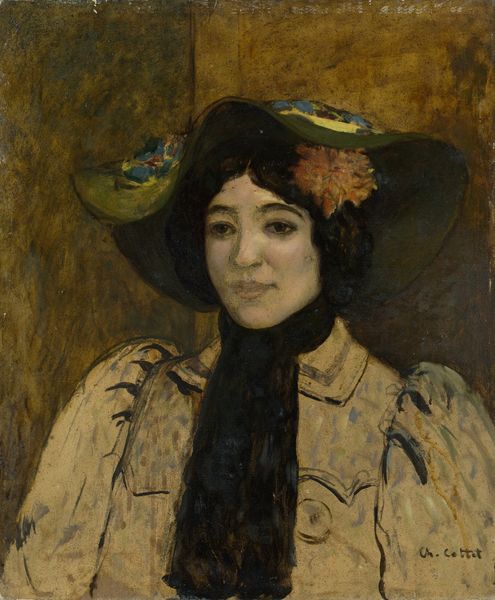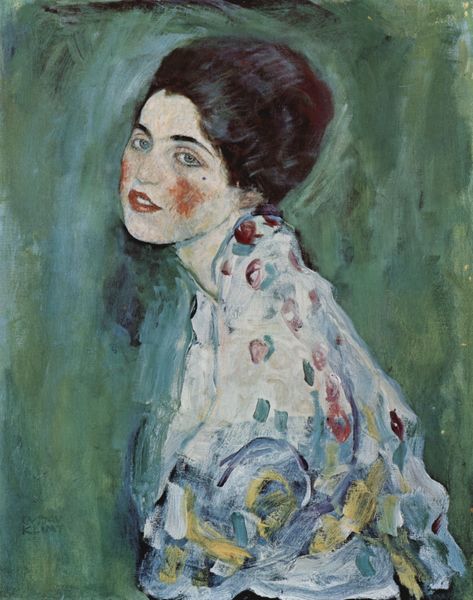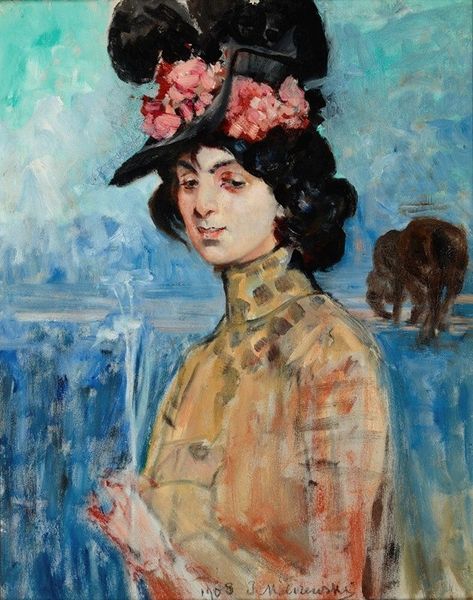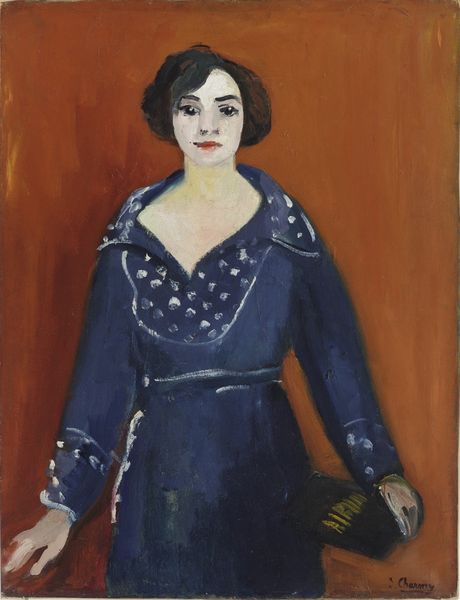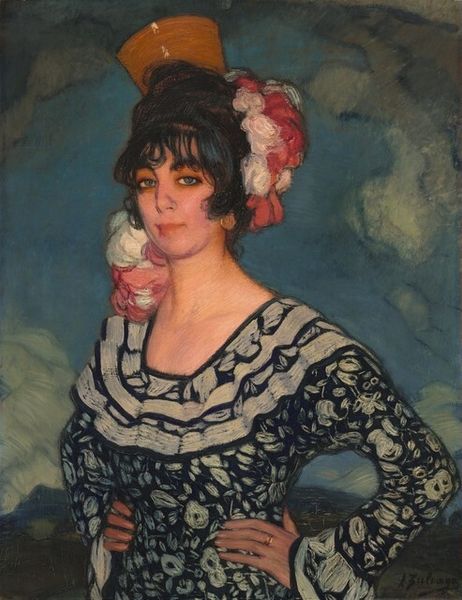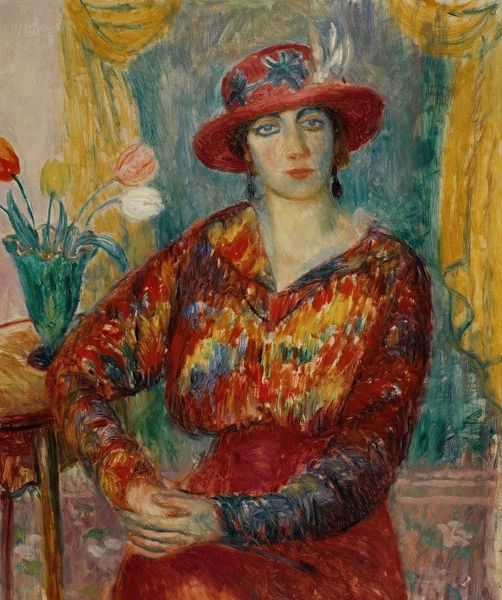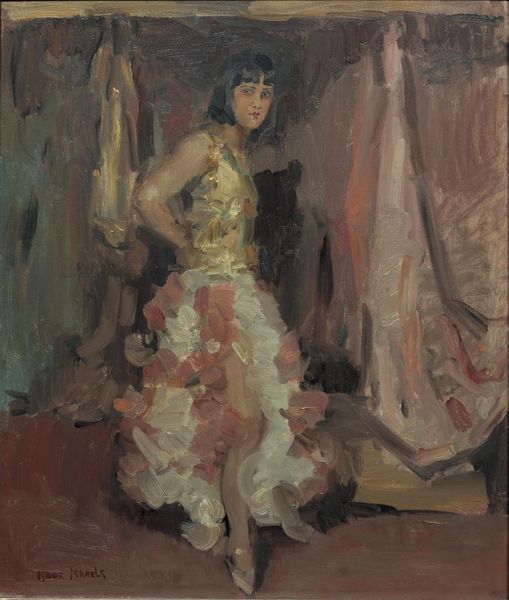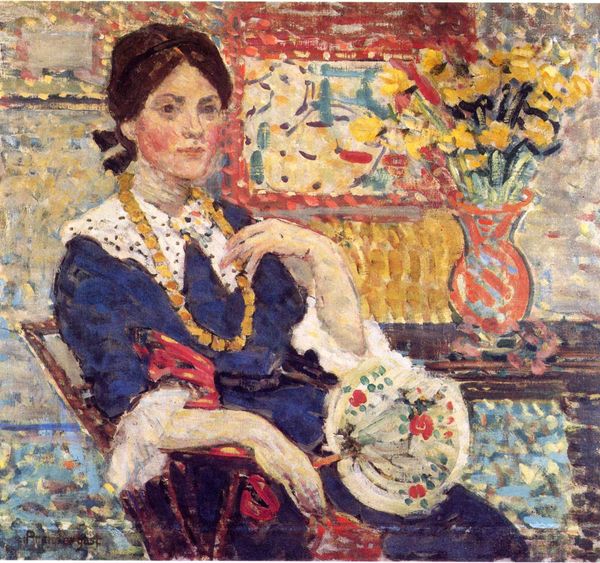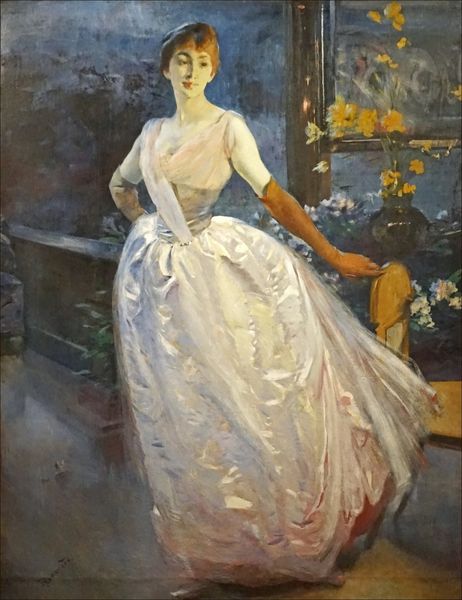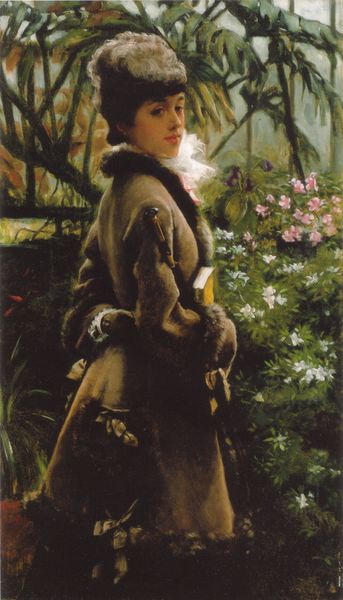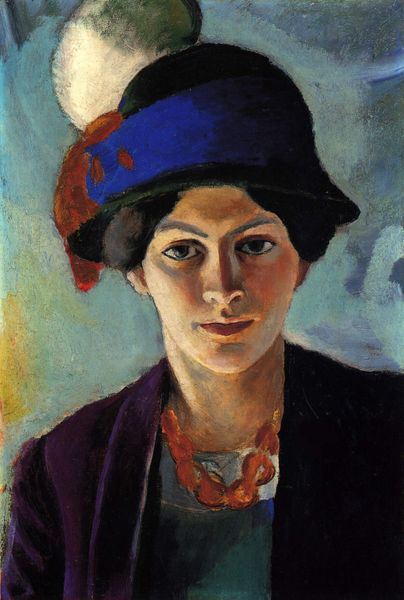
An Elegant Woman at the Élysée Montmartre (Élégante à l’Élysée Montmartre) 1888
0:00
0:00
painting, oil-paint
#
portrait
#
art-nouveau
#
painting
#
impressionism
#
oil-paint
#
caricature
#
genre-painting
#
portrait art
Dimensions: 90.5 × 72 cm (35 5/8 × 28 3/8 in.)
Copyright: Public Domain
Curator: Let’s take a look at Louis Anquetin’s "An Elegant Woman at the Élysée Montmartre" from 1888, currently housed at The Art Institute of Chicago. Editor: Wow, my first impression is all about the layering! Look at the way the hat, jacket, and skirt all jostle for attention. There's almost a sense of a theatrical costume fitting. Curator: Indeed, the theatricality jumps out. And if we examine the materiality more closely, the density of the oil paint in the rendering of the flowers and fabrics suggests a focus on texture and form. What I find fascinating is Anquetin's use of oil paint to somewhat flatten the forms, defying the conventions of depth expected from the Impressionist movement, though some see it through that lens. Editor: Yes! While undeniably Impressionistic in its subject matter-- depicting leisure and modern life, it also embraces symbolism through the specific image choices. The Élysée Montmartre was, you know, *the* place for social mixing. The artist places her at the heart of the bustling atmosphere with the elaborate hat drawing attention, possibly suggesting a social status, or aspirations to that social world. What's her story? Who does she represent? Curator: Interesting point! You can tell there is commentary on labor in fashion from the turn of the century when dress production depended upon garment workers and factories. Notice the pattern of the dress, and consider where and by whom these clothes may have been produced and then purchased for a night on the town. What were their wages? What did that time of leisure *cost* in labor? Editor: So, seeing those hands in the ochre-tinted gloves then. Are those gilded hands the true symbol here? Do they represent that tension that you talk about, the cost? Also note the careful detail given to the lamp post and the women lining up and posing; a tableau of beauty pageantry? Is Anquetin positioning his "elegant woman" among these women for another type of comparison? What does *her* tableau represent, that unique profile facing toward, perhaps even resisting the throng? Curator: I agree! Also, it's critical to understand Anquetin's interest in the Japanese prints then flooding Paris. In this painting, Anquetin demonstrates an integration of their influences and perhaps suggests we look also for a narrative outside Western conventions. Editor: Absolutely. By dissecting these symbols and appreciating the craftsmanship, we start to unravel narratives far beyond a simple snapshot of a fashionable woman. Curator: Precisely! Appreciating both the symbolism, materials, and cultural considerations enhances our experience with Anquetin's piece immeasurably.
Comments
No comments
Be the first to comment and join the conversation on the ultimate creative platform.
